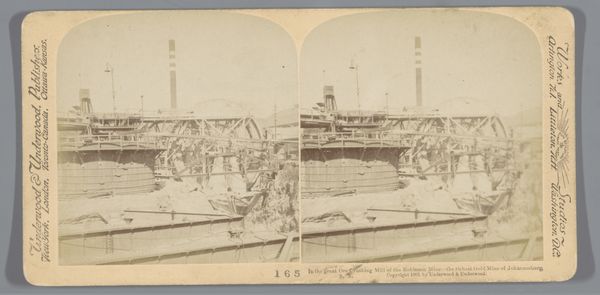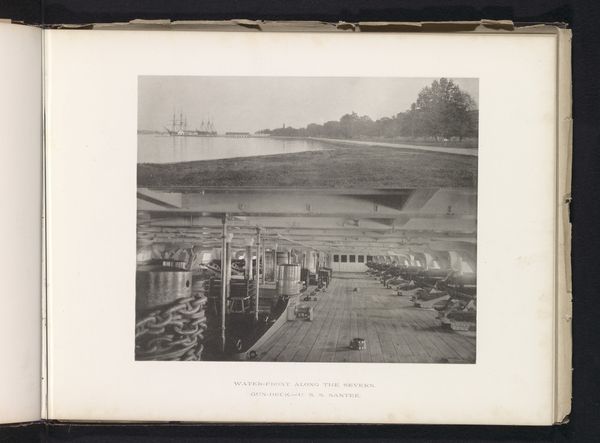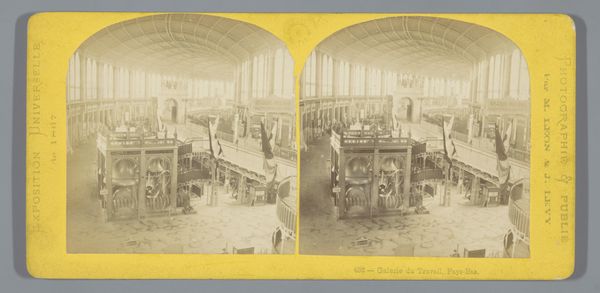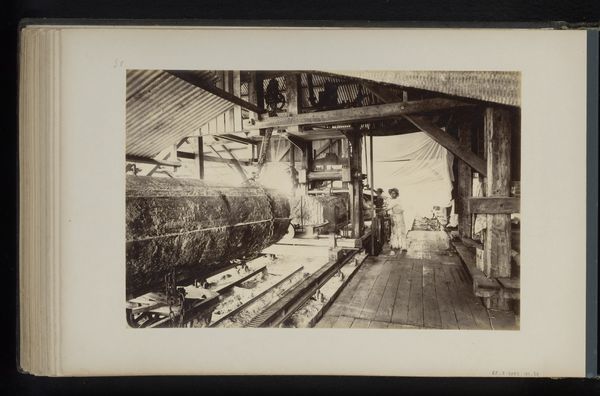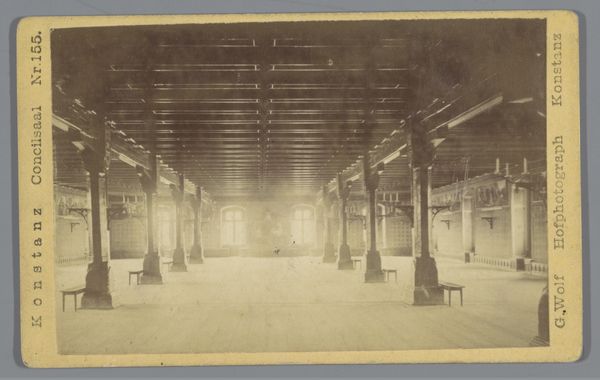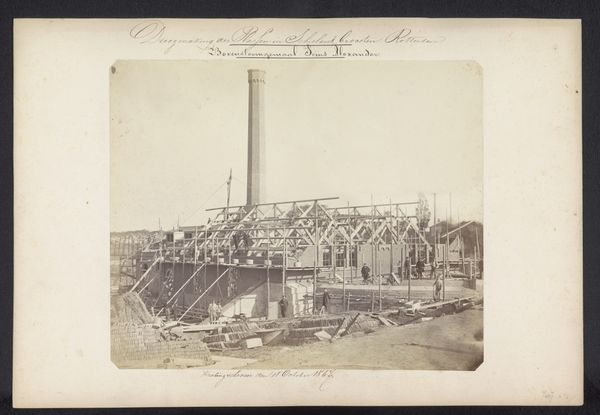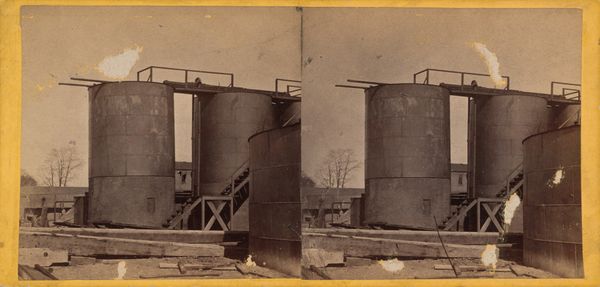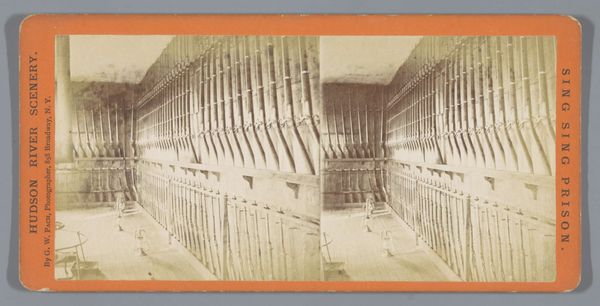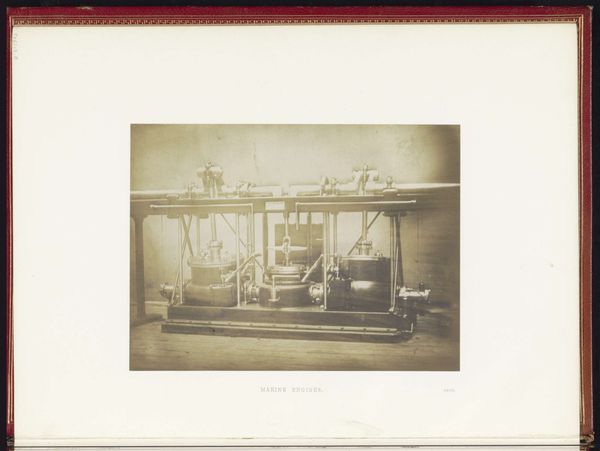
print, photography
#
still-life-photography
# print
#
landscape
#
photography
#
realism
Dimensions: height 88 mm, width 178 mm
Copyright: Rijks Museum: Open Domain
Curator: This image, captured by Underwood & Underwood around 1901, shows “Neerslagvaten bij de Robinson Mine bij Johannesburg.” The subject is still-life photography, with elements of landscape realism. Editor: Immediately striking is the sheer repetition and regimentation. Rows upon rows of these vats receding into a vanishing point. It's an industrialized landscape, stripped of any natural element except the potential implications of its activity, perhaps hinting at the heavy footprint of mining on the environment and indigenous populations. Curator: Indeed. The repetitive forms of the precipitation tanks create a kind of industrial altar, speaking to the single-minded pursuit of wealth that drove much of South African history. Do you find any implied symbolism within the print? Editor: Symbolically, the processing of ore into refined materials also highlights the power dynamics and systems of control that govern access to and ownership of natural resources. The colonial infrastructure of South Africa is imprinted on this landscape. Curator: Looking at the photograph’s realism as its own symbol, one might see a depiction of progress through innovation during that era, even when acknowledging its problematic foundation. It makes me think about ideas around hubris—or cultural pride— and its limitations. Editor: Perhaps it also reflects the illusion of control that early 20th century technologies represented. Though, considering the history of the Robinson mine in South Africa, that ‘progress’ directly correlates to economic suppression for so many of Johannesburg's residents. Curator: Those nuances can become lost over time. Examining this stereo view image, created for mass consumption, it allows one to see the convergence of industry, imperialism, and photography's role in shaping public perception. Editor: Absolutely. Thinking critically about who the assumed viewer is in that original context informs what ethical quandaries this "objective" rendering brings up in its new cultural contexts. Curator: Examining the piece’s role as cultural artifact opens up avenues into a complex and loaded history. Editor: It reminds me how crucial historical perspective remains in evaluating any document, artwork or otherwise, in navigating ethical waters around ownership, representation and accountability in the present day.
Comments
No comments
Be the first to comment and join the conversation on the ultimate creative platform.

